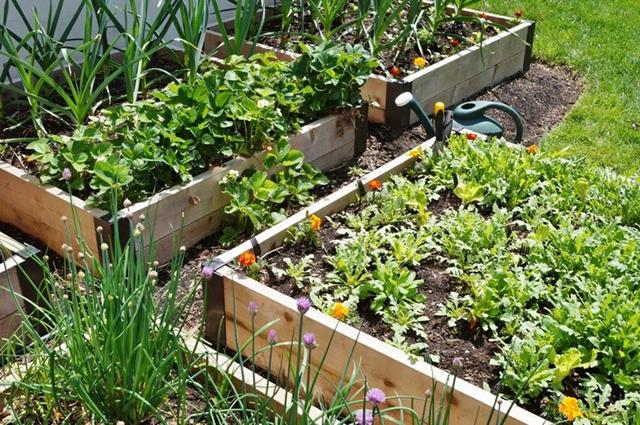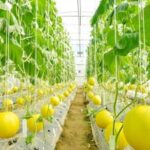Are you interested in growing your own vegetables but have limited space or resources? Recycled container vegetable gardening might be the perfect solution for you. This innovative and sustainable gardening practice allows you to grow a variety of vegetables using items that would typically end up in landfills. In this article, we will explore the concept of recycled container vegetable gardening, including its definition, benefits, and the importance of sustainable gardening practices.
Recycled container gardening involves using various types of containers such as plastic bottles, wooden crates, or old tires to grow vegetables. Not only does this practice help reduce waste by repurposing materials, but it also offers several benefits for both the environment and gardeners. By understanding the concept of recycled container vegetable gardening, you can contribute to sustainability while enjoying fresh and healthy produce right from your own home.
In addition to discussing the benefits of using recycled containers for vegetable gardening, we will also provide a brief overview of the importance of sustainable gardening practices. From conserving water and reducing waste to promoting biodiversity and supporting local ecosystems, sustainable gardening has numerous positive impacts on the environment. Join us as we delve into the world of recycled container vegetable gardening and discover how you can embrace sustainability while cultivating your own nutritious and delicious vegetables.
Selecting the Right Containers for Your Garden
When it comes to recycled container vegetable gardening, the first step is selecting the right containers for your garden. There are various types of recycled containers that can be suitable for growing vegetables, including plastic bottles, wooden crates, and old tires. Each type of container has its own set of benefits and considerations, so it’s important to choose wisely based on the specific needs of your vegetable plants.
Considerations for Choosing the Right Size and Material
When selecting containers for your recycled container vegetable gardening project, it’s important to consider the size and material of the containers. Different vegetable plants have varying root systems and space requirements, so you’ll need to choose containers that can accommodate their growth.
For example, larger plants like tomatoes may require deeper containers, while smaller plants like lettuce can thrive in shallower ones. Additionally, consider the material of the containers – porous materials like terracotta can dry out quickly and may require more frequent watering, while plastic containers tend to retain moisture better.
Tips for Prepping and Cleaning Recycled Containers
Before using recycled containers for vegetable gardening, it’s essential to properly prep and clean them to ensure a healthy environment for your plants. Start by thoroughly washing the containers with water and dish soap to remove any residue or contaminants.
If you’re repurposing a container that previously held chemicals or non-food items, consider soaking it in a solution of water and vinegar to neutralize any remaining substances. Once cleaned, allow the containers to dry completely before adding soil and planting your vegetables.
By carefully considering the size and material of your recycled containers and taking the time to properly prep and clean them, you can set your vegetable garden up for success from the very beginning. This sustainable approach not only benefits the environment by reusing materials but also provides an opportunity for creative expression through unique container choices for gardening. With these considerations in mind, you can embark on your recycled container vegetable gardening journey with confidence.
Choosing the Ideal Location for Your Recycled Container Garden
When it comes to setting up a recycled container vegetable garden, choosing the right location is crucial for the success of your plants. The ideal spot will provide adequate sunlight, space, and proximity to a water source. Here are some factors to consider when selecting the perfect location for your recycled container garden.
Factors to Consider
One of the most important factors when choosing a location for your recycled container vegetable garden is sunlight. Most vegetables require at least 6-8 hours of sunlight per day, so it’s essential to place your containers in an area that receives plenty of sunlight.
Additionally, consider the space available for your containers and ensure that there is enough room for proper air circulation around each plant. Proximity to a water source is also important, as you’ll need easy access to water your plants regularly.
Maximizing Small Spaces
For those with limited space, there are creative solutions for maximizing small areas for container gardening. Vertical gardening using recycled containers can be a great option for small yards or balconies. Hanging baskets, stacked crates, or even repurposed wooden pallets can be used to create a vertical garden that makes the most of limited space while still providing ample room for healthy plant growth.
Importance of Drainage and Airflow
Proper drainage and airflow are essential for the health and growth of your vegetable plants. When positioning your containers, make sure they have adequate drainage holes to prevent waterlogging, which can lead to root rot. Additionally, allowing for good airflow around each plant can help prevent disease and mold growth. Be mindful of placing containers too close together and ensure that there is enough space between them for air circulation.
By carefully considering these factors when selecting the location for your recycled container vegetable garden, you can set yourself up for success in growing healthy and thriving plants in sustainable and eco-friendly ways.
Preparing the Soil and Planting Your Vegetables
When it comes to recycled container vegetable gardening, preparing the soil is essential for the successful growth of your plants. The right soil mix can provide the necessary nutrients and drainage for your vegetables to thrive. Here are some tips for creating a suitable soil mix for your recycled containers:
- Use a combination of organic potting soil, compost, and perlite to create a well-draining yet nutrient-rich growing medium.
- Consider adding in some slow-release organic fertilizer to provide a steady supply of nutrients to your plants as they grow.
- Ensure that your recycled containers have adequate drainage holes to prevent waterlogging, which can lead to root rot.
Once you have prepared the soil, it’s time to plant your vegetables in the recycled containers. Whether you’re starting from seeds or using seedlings, here are some steps to follow:
- Fill the containers with your prepared soil mix, leaving enough space at the top for watering.
- For seeds, follow the planting depth and spacing recommendations on the seed packets.
- For seedlings, carefully transplant them from their nursery pots into your prepared containers, making sure not to damage their roots.
- Gently water the newly planted seeds or seedlings and place them in a suitable location with adequate sunlight.
Maintaining optimal growth and health for your vegetable plants in recycled containers also involves regular maintenance practices such as watering and pruning. By following these steps and tending to your garden regularly, you can enjoy a bountiful harvest from your recycled container vegetable garden while promoting sustainable gardening practices.
Watering and Fertilizing Your Container Garden
When it comes to recycled container vegetable gardening, proper watering and fertilizing are crucial for the growth and health of your plants. One of the main benefits of using recycled containers for vegetable gardening is that you have complete control over the soil and nutrient content, allowing you to create an ideal environment for your plants to thrive.
It is important to establish a regular watering schedule, as different vegetable plants have varying moisture needs. Factors such as the size of the container, the type of soil mix, and the weather conditions in your area can all impact how often you should water your plants.
Overwatering or underwatering can both have negative effects on plant growth, so it’s essential to find a balance and pay attention to the specific needs of each type of vegetable you are growing.
In addition to proper watering, using organic fertilizers or compost can provide essential nutrients for your vegetables while also promoting sustainable gardening practices. By incorporating natural fertilizers into your recycled container garden, you can reduce waste and give back to the environment by enriching the soil with beneficial nutrients. It’s important to avoid chemical fertilizers that can harm the environment and instead opt for eco-friendly alternatives that support a healthy ecosystem.
| Guidelines for Watering | Guidelines for Fertilizing |
|---|---|
| Establish a regular schedule based on plant needs | Use organic fertilizers or compost |
| Monitor moisture levels in soil | Avoid chemical fertilizers |
| Avoid overwatering or underwatering | Incorporate natural nutrients into soil |
By following these guidelines and embracing sustainable practices in watering and fertilizing your recycled container garden, you can ensure healthy growth for your vegetable plants while minimizing environmental impact.
Managing Pests and Diseases in a Recycled Container Garden
Recycled container vegetable gardening offers many benefits, including the ability to control the growing environment and reduce waste. However, just like traditional gardens, container gardens are still susceptible to pests and diseases that can harm your plants. It’s important to be proactive about managing these issues to ensure a successful harvest from your recycled container garden.
Here are some tips for effectively managing pests and diseases in your recycled container vegetable garden:
1. Identification of common pests and diseases: Familiarize yourself with the common pests and diseases that can affect vegetable plants in containers. Look out for signs such as holes in leaves, discolored or wilting foliage, and unusual growth patterns.
2. Natural and eco-friendly methods for pest control: Avoid chemical pesticides and opt for natural remedies such as neem oil, insecticidal soap, or homemade garlic spray to deter pests. Encourage beneficial insects like ladybugs and lacewings to help manage pest populations naturally.
3. Regular monitoring and preventive measures: Keep a close eye on your plants for any signs of trouble and take preventive actions such as practicing crop rotation, removing affected plants promptly, and maintaining good hygiene in your garden area.
By being vigilant about pest and disease management in your recycled container vegetable garden, you can help ensure the health and productivity of your plants. Embracing natural solutions will not only benefit your garden but also contribute to sustainable gardening practices overall.
Harvesting and Enjoying the Fruits of Your Labor
Once your recycled container vegetable garden has been carefully nurtured and tended to, it’s time to reap the rewards of your hard work. Harvesting your homegrown vegetables is a gratifying experience that allows you to enjoy the freshest produce while reducing your environmental impact. But before you start picking, it’s important to know when and how to harvest each type of vegetable for optimal flavor and nutrition.
One key aspect of harvesting vegetables from your recycled container garden is knowing the signs that indicate they are ready for picking. For example, tomatoes should be harvested when they are fully colored and have a slight give when gently squeezed.
Leafy greens like lettuce and kale can be harvested when they reach the desired size, typically before they begin to bolt or become too bitter in taste. Root vegetables such as carrots and radishes are ready once their tops protrude from the soil – simply loosen the soil around them and gently pull them out by their tops.
Proper harvesting techniques are essential to ensure continuous growth and productivity in your recycled container vegetable garden. When picking fruits and vegetables, it’s important to use clean gardening shears or scissors to avoid damaging the plant. Cut larger crops such as zucchini or eggplant from the stem using a sharp tool rather than pulling them off by hand, which can cause stress to the plant.
Ensuring that you harvest your produce at peak freshness is key to fully enjoying the fruits of your labor. Once harvested, there are numerous creative ways to savor your homegrown vegetables, whether it’s incorporating them into delicious recipes, sharing them with friends and family, or preserving them for future use through methods like canning or freezing.
| Vegetable | Harvesting Technique |
|---|---|
| Tomatoes | Fully colored with a slight give when squeezed; use sharp shears for cutting |
| Lettuce/Kale | Harvest at desired size before bolting; snip leaves near base with clean scissors |
| Carrots/Radishes | Ready when tops protrude from soil; gently pull them out by their tops |
| Zucchini/Eggplant | Cut from stem using sharp tool; avoid pulling by hand |
Conclusion
In conclusion, recycled container vegetable gardening offers a multitude of benefits for both the environment and avid gardeners. By using materials that would have otherwise been discarded, individuals can create sustainable and eco-friendly gardens that produce an abundance of fresh, homegrown vegetables.
Embracing this practice not only reduces waste but also promotes responsible and earth-conscious gardening methods. With the increasing focus on environmental sustainability, recycled container gardening provides a practical and impactful way to contribute to a healthier planet.
As more people become aware of the importance of sustainable living, there is a growing interest in finding creative ways to reduce our carbon footprint. Recycled container vegetable gardening presents an accessible and budget-friendly option for those looking to start their own sustainable garden. By repurposing items like plastic bottles, wooden crates, or old tires, individuals can actively participate in reducing waste while enjoying the rewards of cultivating their own produce.
I encourage readers to take the first step towards embracing sustainable gardening practices by starting their own recycled container vegetable gardens. Not only does this endeavor provide a fulfilling hobby, but it also contributes positively to the environment.
By sharing experiences and knowledge of recycling container vegetable gardening with others, we can collectively work towards creating a greener and more sustainable future for generations to come. Let’s join together in this effort and celebrate the bountiful harvests that await us from our very own recycled container gardens.
Frequently Asked Questions
Is It OK to Plant Vegetables in Plastic Containers?
Yes, it is perfectly okay to plant vegetables in plastic containers. In fact, plastic containers are lightweight, durable, and affordable, making them a popular choice for container vegetable gardening. They also come in various sizes, allowing for versatility in what can be grown.
What Are Cheap Containers to Grow Vegetables In?
When it comes to cheap containers for growing vegetables, options include using old buckets, large plastic storage bins with drainage holes added, or even repurposed food containers. These alternatives are cost-effective and can be easily found around the house or purchased at a low price.
What Is the Best Vegetable to Grow in a Container?
The best vegetable to grow in a container ultimately depends on factors such as the size of the container and your individual preferences. However, some popular choices for container gardening include tomatoes, peppers, lettuce, radishes, and herbs like basil and parsley. These vegetables and herbs tend to thrive in containers when provided with the right care and conditions.

If you’re looking to get into vegetable gardening, or are just looking for some tips on how to make your current garden better, then you’ve come to the right place! My name is Ethel and I have been gardening for years. In this blog, I’m going to share with you some of my best tips on how to create a successful vegetable garden.





